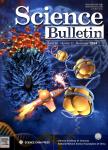Effects of structure and sur-face properties on carbon nanotubes' hydrogen storage characteristics
Effects of structure and sur-face properties on carbon nanotubes' hydrogen storage characteristics作者机构:Department of Mechanical EngineeringState Key Laboratory ofAutomobile Safety and EnergyTsinghua UniversityBeijing 100084China Institute of Nuclear Energy TechnologyTsinghua UniversityBeijing 100084China
出 版 物:《Chinese Science Bulletin》 (中国科学通报)
年 卷 期:2001年第46卷第16期
页 面:1358-1360页
核心收录:
学科分类:07[理学] 070205[理学-凝聚态物理] 08[工学] 080501[工学-材料物理与化学] 0805[工学-材料科学与工程(可授工学、理学学位)] 0702[理学-物理学]
基 金:This work was supported by the State Key Project for Fundamental Research of MOST China (Grant No. G20000264-04)
主 题:carbon nanotube hydrogen storage adsorption surface functional group heat treatment.
摘 要:Hydrogen adsorption experiments were carried out in special stainless steel vessels at room temperature (298K) and under 10 MPa using self-synthesized multi-walled carbon nanotubes. In the experiments, carbon nanotubessynthesized by the seeded catalyst method were pretreatedby being soaked in chemical reagents or annealed at hightemperature before they were used to adsorb hydrogen, but their capacity for hydrogen storage was still poor. Carbonnanotubes synthesized by the floating catalyst method were found to be able to adsorb more hydrogen. They have ahydrogen storage capacity of over 4% after they wereannealed at high temperatures, which suggested that theycould be used as a promising material for hydrogen storage.



